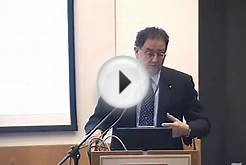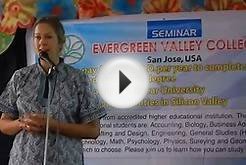Higher education in S&E is important because it produces an educated S&E workforce and an informed citizenry. It has also been receiving increased attention as an important component of U.S. economic competitiveness. In his 24 February 2009 address to a joint session of Congress, President Barack Obama called for every American to commit to at least 1 year of education or career training after completing high school. This section discusses the characteristics of U.S. higher education institutions providing S&E education and the financing of higher education.
Institutions Providing S&E Education
The U.S. higher education system consists of a large number of diverse academic institutions that vary in their missions, learning environments, selectivity, religious affiliation, types of students served, types of degrees offered, and sector (public, private nonprofit, or private for-profit) (NCES 2010a). Among the approximately 4, 500 postsecondary degree-granting institutions in the United States in the 2009–10 academic year, 62% offered bachelor's or higher degrees, 31% offered associate's degrees, and 8% offered degrees that were at least 2-year but less than 4-year as the highest degree awarded (NCES 2010b). In 2009, U.S. academic institutions awarded more than 3.1 million associate's, bachelor's, master's, and doctoral degrees; 23% of the degrees were in S&E (appendix table 2-1).
Doctorate-granting institutions with very high research activity are the leading producers of S&E degrees at the bachelor's, master's, and doctoral levels. In 2009, these research institutions awarded 75% of doctoral degrees, 42% of master's degrees, and 38% of bachelor's degrees in S&E fields. (See sidebar "Carnegie Classification of Academic Institutions.") Master's colleges and universities awarded another 29% of S&E bachelor's degrees and 26% of S&E master's degrees in 2009. Baccalaureate colleges were the source of relatively few S&E bachelor's degrees (12%) (appendix table 2-1), but they produce a large proportion of future S&E doctorate recipients. When adjusted by the number of bachelor's degrees awarded in all fields, baccalaureate colleges as a group yield more future S&E doctorates per hundred bachelor's degrees awarded than other types of institutions, except research universities (NSF/NCSES 2008).
Community Colleges
Community colleges (also known as public 2-year colleges or associate's colleges) play a key role in increasing access to higher education for all citizens. These institutions serve diverse groups of students and offer a more affordable means of participating in postsecondary education. They are likely to serve groups with lower college attendance rates in past generations. Community colleges are important in preparing students to enter the workforce with certificates or associate's degrees and in preparing students to transition to 4-year colleges or universities (Karp 2008). They provide the education needed for S&E or S&E-related occupations that require less than a bachelor's degree, and they provide the first 2 years of many students' education before they transfer to an S&E program at a 4-year college or university.
In the 200809 academic year, there were more than 1, 000 community colleges in the United States. These colleges enrolled about 7.2 million students, or about a third of all postsecondary students. Nearly six out of ten of these students were enrolled part-time (NCES 2011a). With the economic recession, enrollment in community colleges increased by about 800, 000 students between 2007 and 2009 (NCES 2009a and 2011a).
Community colleges play a significant role in the education of individuals with advanced S&E credentials. Among U.S. citizen and permanent resident S&E doctorate holders who received their doctorates between 2005 and 2009, nearly one in five indicated they had earned college credit from a community or 2-year college (table 2-1). According to data from the National Survey of Recent College Graduates, in the last decade, the proportion of recent bachelor's S&E graduates who reported ever attending a community college increased (table 2-2). Forty-six percent of 2006 and 2007 S&E graduates indicated they had attended a community college (49% of the bachelor's recipients and 35% of the master's recipients). Graduates in engineering and physical sciences were the least likely to have attended a community college. Between 1999 and 2008, the proportion of S&E graduates who attended community colleges increased in the life sciences, social sciences, mathematics, and computer sciences (figure 2-1).
electronics repair company











